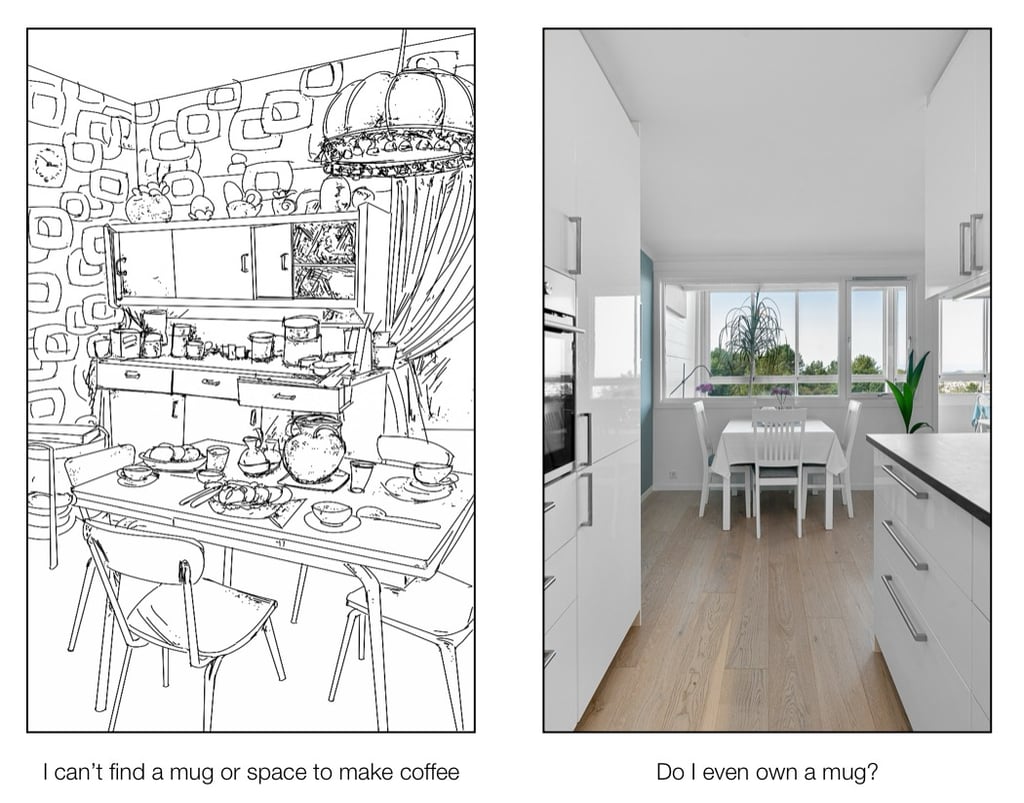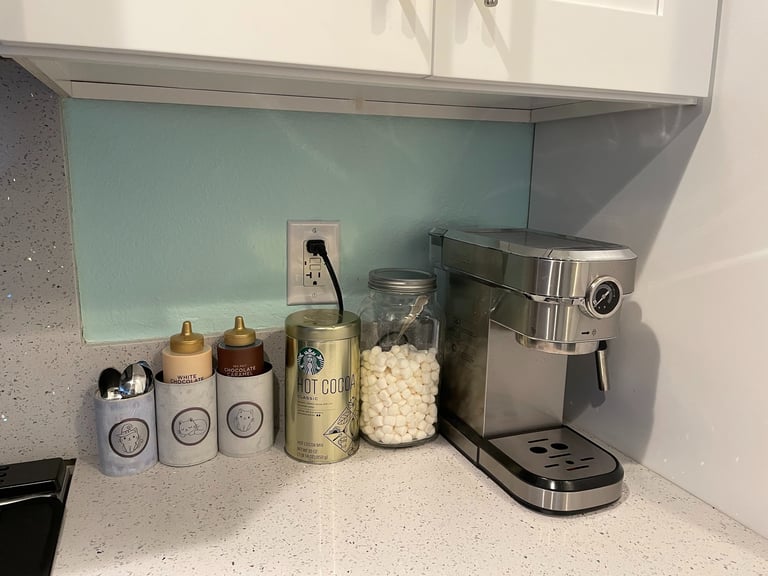Solutions for Clutter
How to find balance between order and chaos


A friend of mine recently said:
“I don’t know what to do. If I cannot see an item, I forget it exists. If I leave everything out where I can see it, the clutter overwhelms me and makes my brain feel itchy. I can’t win.”
This person is dealing with a common problem. They are also looking at it in a very black and white way as though there are no options between having everything put away and having everything visible.
There are a few ways to approach this. Use what works, ignore the rest. For the purposes of simplicity and clarity, this post will focus on kitchens. The suggestions can be adapted to any space in your home.
Glass fronted cabinets
Pros:
You can see items without covering countertops in clutter
Items can be sorted and organized and have “home” cabinets
Glass gives a finished look to cabinets while still allowing for visibility
Cons:
Can be expensive
May obscure visibility somewhat, especially if frosted glass is used
There is no place to hide clutter such as the quick pick up people tend to do in the last minutes before guests arrive
Open cabinets
Pros:
You can see items without covering countertops in clutter
Items can be sorted and organized and have “home” cabinets
Does not cost anything because you simply take off the existing cabinet doors
Cons:
Unfinished edges of cabinets that were not visible when doors were in place may be visible
Less finished look overall
There is no place to hide clutter such as the quick pick up people tend to do in the last minutes before guests arrive
Labeled cabinets
If you do not want glass or open cabinets, you can simply hang a list or picture of what is in each cabinet on the door.
Pros:
Free
Little effort is needed to create the lists or pictures
It helps you and others in your household be consistent about what items get stored in which cabinets
Cons:
The list or picture on the front of the cabinet may not be aesthetically pleasing to you
If you are not consistent about which items go where, the lists or pictures will not be accurate or could take a lot of time to maintain
Designated clear zones and clutter zones
Example - part of my kitchen is visible from the entry and living room. The countertops in that area are designated clear zones. Do not leave clutter there. Other areas of the countertops are designated clutter landing places such as a spot for dishes to be saved for reuse and a spot for clean dishes to dry.
Pros:
No cost to implement
If the areas visible to other rooms are free of clutter, that substantially cuts down on the amount of time you spend in the ‘clutter = itchy brain’ mode
Ensures some part of the counter is always clear if you need somewhere to set something
Cons:
Requires everyone in a household to understand, agree to, and remember to follow the arrangement
The clear areas may not stay clear
Make it look purposeful


Pros:
It keeps the most used items in easy reach
It keeps your counters looking organized which means they are less likely to become clutter magnets
It can be inexpensive if you are resourceful
If you are not crafty, simply buying matching containers will accomplish the same thing
Cons:
If you are not crafty, it can get expensive
Example:
Coffee or hot chocolate are breakfast staples in my home. Getting out, using, and putting away so many items every morning was a pain. Leaving everything scattered about the counter simply invited more clutter, and left us without any clear countertop to actually make drinks on.
The jar for the marshmallows was a few dollars at a craft store. The Starbucks hot chocolate comes in a decorative tin but you can also buy decorative tins at craft stores that are fairly inexpensive. The things holding the spoons and Torani flavors are actually just cans that I wrapped fabric around and added stickers. Wrapping paper would also work, but would need to be replaced if you wash the cans. This project cost me less than $10, and a little bit of time.
This part of my kitchen now functions seamlessly. The spot is highly visible in that anyone who looks at it knows it is organized for a purpose. This means it does not attract extra clutter and there is always a free spot to make drinks.
Pro tip: regardless of how you store marshmallows, sprinkle a little cornstarch in the bag or jar and shake well to get it throughout to prevent marshmallows from sticking and clumping together. If your marshmallows are already sticky or clumped, wash and dry your hands, sprinkle your hands with cornstarch, and work gently through the container of marshmallows to separate. It took about a minute or so to unstick an entire package that had gotten squished at the bottom of a bag of groceries.
